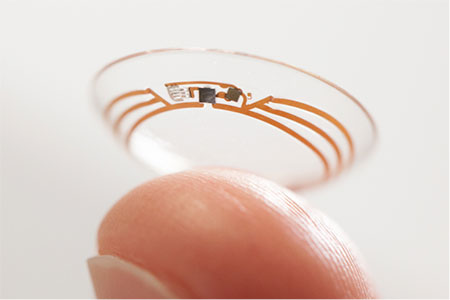By Stan Walerczyk
This week’s lighting column focuses on how the lighting industry is inexpensively incorporating apps and other tools into lighting products and low priced advanced wired and wireless controls (also referred to as “the internet of things”).
First, LED lighting is so efficient and electric bills are so low, that controls are often not cost effective for energy savings. For example, two 20W LED troffers or troffer kits could be in a private office. Based on 3000 hours per year and $.15/KWH, the annual electric cost is only $18. Let’s say that an occupancy sensor reduces hours by 20%, which would a $3.60 annual savings. Payback on even a basic grade wall sensor would probably be over 15 years, and probably infinite, because the sensor may not last that long.
Dr. Bob Karlicek, who is a professor and director of the Smart Lighting Engineering Research Center, introduced me to the googlization of lighting and controls. One of their charters is to try to stay five years ahead of what manufacturers can do, which is a challenge since solid state lighting and wireless controls are evolving so quickly.
http://smartlighting.rpi.edu/
Early-adopter contractors and end customers may be quite interested in at least some of these products and the vendors who introduce these products to them.
This googlization or internet of everything has already started on a limited scale with products such as the Philips’ Hue, Illumi Wireless and LIFX, which are screw-in dimming and color changing LED lamps, which are controlled by cell phone apps.
Bytelight – GE and Philips are offering digital addressable lights for interior GPS. For example, you could walk into a store, talk into or type in your cell phone what you want to buy, such as sport coats, and the phone will signal you on which floor and the part of that floor where they are and if there are any sales. Your cell phone may also inform you where ties, dress shirts and dress shoes are.
Several companies are developing LED products with light fidelity (LiFi), which can be safer than WiFi, because the signal does not go through walls.
www.lificonsortium.org
This is only the beginning.
Lighting fixtures could be programmed for different types of people, such as morning larks and night owls, delivering different amount amounts of blue enriched light at different times of the day to suppress or help produce the hormone melatonin for alertness or sleep.
There could be organic LED (OLED) wall fixtures, displaying outside view and useable light in rooms that have no exterior windows.
There could be pre-adaptive controls. For example, if a person goes into an open office early every Tuesday and goes to his or her office module. The one sensor will learn this repetitive activity and turn on the lights relatively high near this person, but quite dim in the rest of the room until other people come to work.
Here is information on Google’s smart contact lenses with blood sugar level monitors. These could also be used to control lighting.
http://www.forbes.com/sites/leoking/2014/07/15/google-smart-contact-lens-focuses-on-healthcare-billions/
I have been recommending LED fixtures with ten year warranties, but have started to question that recently. Since LED fixtures and controls are evolving so quickly getting lower in price, maybe whatever you do now, can be cost effectively retrofitted or replaced within about five years, not just based on hard savings, which include rebates and energy savings, but also soft savings, which can include benefits from personal control and improved circadian rhythms, alertness, sleep, mood, perception, performance – productivity and well being, which usually dwarf hard savings. Within 5 years, people will probably look back and wonder how they lived with that old lighting. Remember how it was before you had a smart phone.
Please let me know what you think of any of my statements. Also if you have a lighting subject that you would like information about, let me know. stan@lightingwizards.com
Tagged with circadian rhythms, Exclusive Feature, lighting, tED